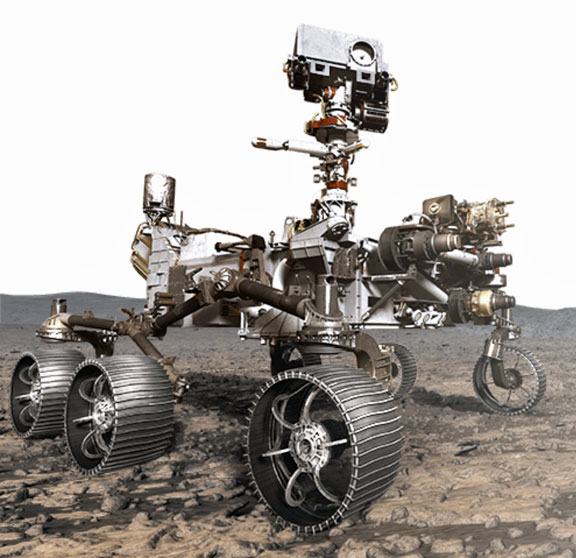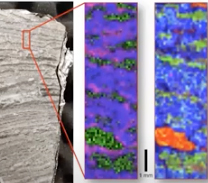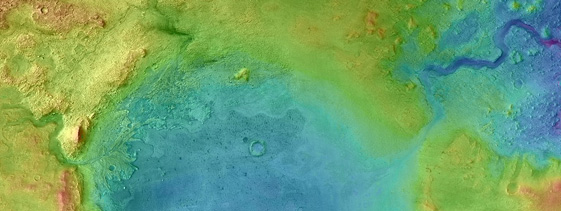|

On July 30, NASA/JPL’s Mars 2020 Perseverance rover launched from Cape Canaveral, beginning its journey to the Red Planet.
Its primary mission is searching for relics of ancient microbial life, and collecting samples that will ultimately be returned to Earth. The exploration gear includes a helicopter named Ingenuity that will independently surveil a great expanse of the rover’s surroundings to identify the most promising destinations.
A second mission objective is evaluating the habitability of Mars for future manned missions. The rover will precisely measure ambient temperature, wind, pressure, humidity, and dust characteristics as they vary throughout a Martian day. The rover will also test technology to extract oxygen from Mars’ atmosphere, which is primarily CO2. Oxygen is essential both to sustain astronauts on Mars and to fuel their return voyage.
Mars 2020 will land on Jezero crater on Feb. 18, 2021, employing a new JPL development: the fully automated TRN (Terrain-Relative Navigation). TRN will analyze the terrain just before landing, and will re-direct the craft to a safer site if need be. Since round trip communication with Earth takes 10 minutes or more, any final steering must be done without human assistance.
Perseverance is an improved version of the very successful Curiosity rover that landed on Mars in 2012. One advance is better wheels and tires — Curiosity showed the Martian terrain can be very corrosive.
Perseverance’s key feature is its ability to drill into soil and rock, and extract cores.
Dr. Katie Stack Morgan, Deputy Project Scientist, explained this mission in a recent webinar. It seems Morgan, a Ph.D. geologist from Caltech, has never met a rock she didn’t love.
She says Mars is a window into the early Solar System and perhaps early life. Due to Earth’s tectonic activity, there are only 9 small areas of our planet where crustal rocks are more than 3.6 billion years old. Since Mars lacks tectonic activity, Morgan says half its surface is over 3.6 billion years old, when water flowed across its surface.
An ancient rock, a stromatolite, from Western Australia reveals layered microbial deposits, the oldest generally accepted evidence of life as shown on the left. The middle and right images show high-resolution chemical analysis of a stromatolite by instruments comparable to those on Perseverance. The green bands indicate organic carbon.

Morgan wants to find the equivalent of stromatolites on Mars — if there are any — and Jezero crater is a great place to look.
Jezero crater shows signs of an ancient inlet river with a terminal delta on the left and an outlet on the right. As Morgan explains, this means the crater was once a lake — an ideal habitat.

Perseverance is expected to collect and analyze some 40 cores near the river delta. Since nothing in space can rival the capabilities of labs on Earth, Perseverance will store these cores at a designated site in the Jezero crater. NASA plans a future mission, perhaps in 2028, to land at that site and bring these cores back to Earth, where all our analytical technologies can be employed.
One might ask why we need more Martian rocks, since over 250 meteorites found on Earth are confirmed to have originated on Mars. All of those, Morgan explained, are igneous — cooled magma or lava — not hospitable to life. The rocks most likely to harbor relics of ancient life are sedimentary.
Mars 2020 is projected to extend over one Martian year, about two Earth years.

Best Regards,
Robert
September 2020
Note: Previous newsletters can be found on my website.
|